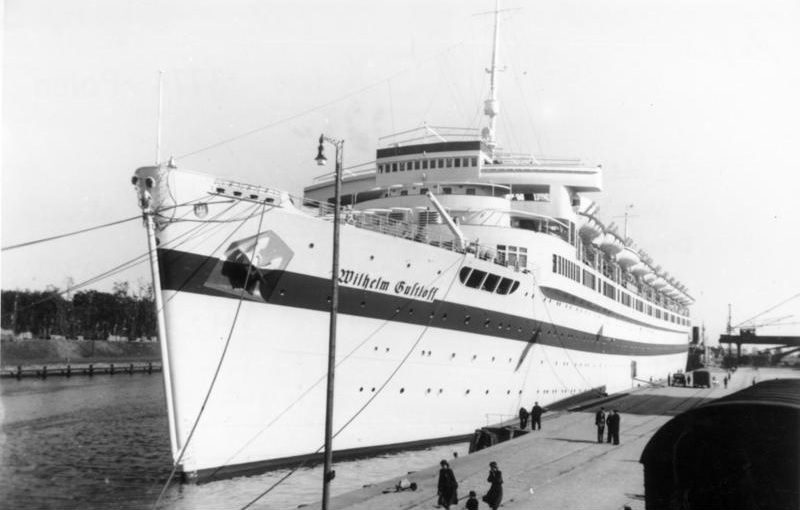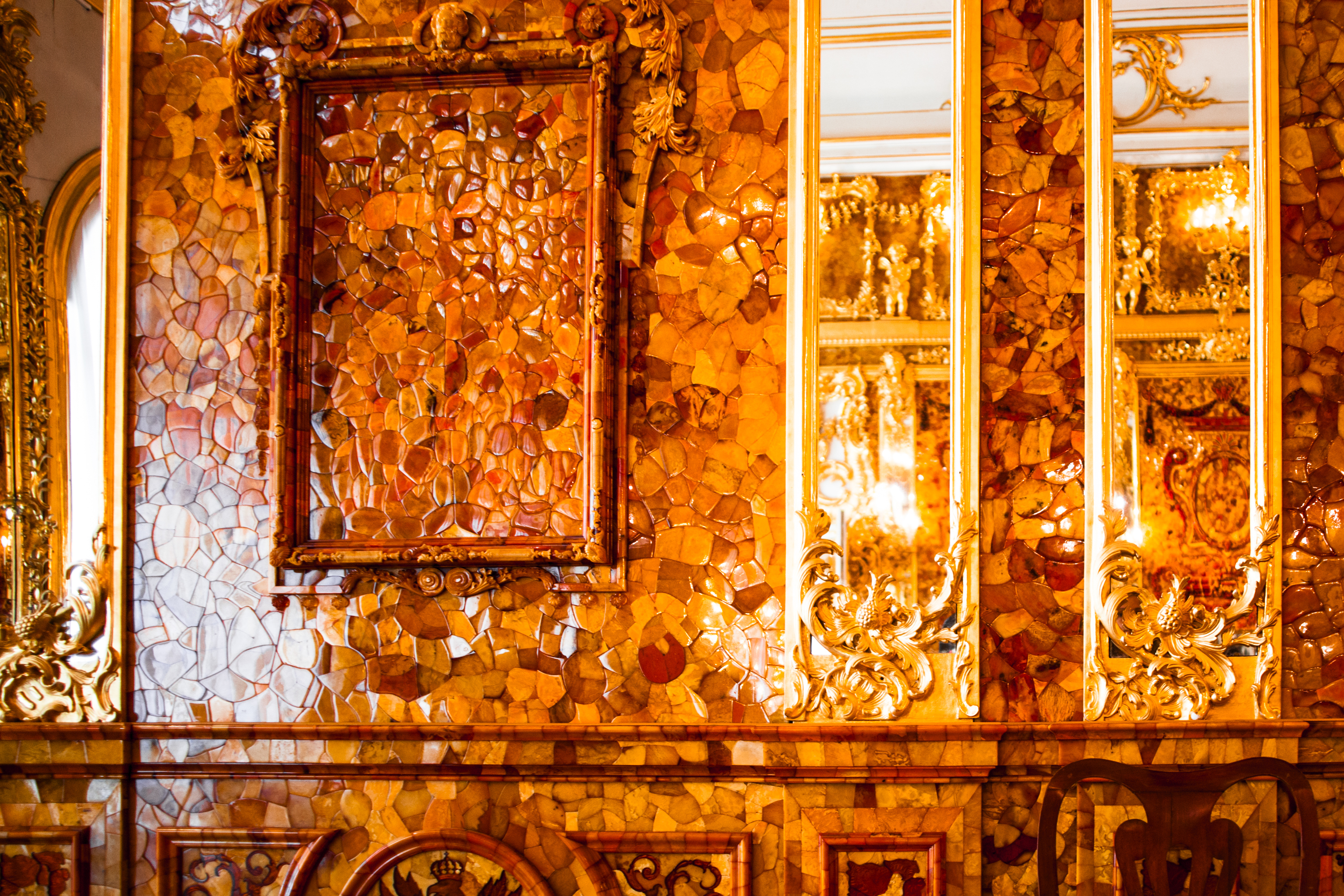Once described as the “Eighth Wonder of the World”, the Amber Room was an opulent chamber befitting the luxurious surroundings of the Charlottenburg Palace in Berlin. Designed by sculptor Andreas Schlüter, it is one of the earliest examples of the use of amber in interior design. Such striking, golden décor you’d think would be hard to miss – but, the fate of the chamber since its looting during World War 2 has been an enduring mystery.
A work of art
When you’re designing a room fit for a king, it pays to think outside the box. In 1701, Schlüter, who was the chief architect to the royal court of Prussia at the time, began work on the Amber Room. The Baltic is famous for its amber, the golden fossilized tree resin prized by palaeontologists and jewelers alike. What better way, then, to decorate a new room in the palace than by covering its walls in the stuff?
The only problem was, how? Schlüter put his head together with Danish artisan Gottfried Wolfram, and the pair of them came up with a whole new way of working with amber. The amber was first heated, then coated in honey and linseed, before being worked onto gem-encrusted wooden panels.
It took years to complete this ambitious task – in fact, King Frederick I and his wife Sophie Charlotte, for whom the room had originally been commissioned, died before it was finished. All was not lost, however, as the completed room was eventually displayed for all to admire (and by all, we mean the rarefied few who can get themselves invited to a royal bash) at the Berlin City Palace.
There, it caught the eye of visiting Russian Tsar Peter the Great. As a show of generosity to shore up the fledgling Russo-Prussian alliance, the Amber Room was given to Russia in 1716, and was packaged up, transported, extended, and installed at the Catherine Palace. The final, reworked chamber contained over 6 tonnes of amber, estimated to be worth up to $290 million in today’s money. A very generous gift indeed.

The striking Catherine Palace was home to the new-and-improved Amber Room. Image credit: Mistervlad/Shutterstock.com
“We’ll take that, thanks” – Adolf Hitler (probably)
The Amber Room remained ensconced within the Catherine Palace for over 200 years, even surviving the Russian Revolution. That all came to an end, though, during World War 2, when the eyes of Hitler’s Nazis turned toward the Soviet Union.
In 1941, German forces enacted what was then the largest military operation in history: Operation Barbarossa. Hitler believed that his Aryan “master race” needed more living space, or lebensraum, and where better to house everyone than in the vast expanse of the Soviet Union to the east. It’s safe to say that he was confident it would work, too, reportedly saying “we have only to kick in the door and the whole rotten structure will come crashing down.”
While he was at it, Hitler thought that the invasion would be an opportune time to “repatriate” what he considered to be a fine example of German craftsmanship. He felt the Amber Room should be returned to its native land to be enjoyed there. Attempts to conceal the amber panels behind wallpaper did nothing to deter the Nazis, who had the whole lot stripped and packaged up within 36 hours, ready to be carted back to present-day Kaliningrad, then the German city of Königsberg.
For a couple of years, the Amber Room was once again on proud display in Königsberg castle; but, as the tide of the war began to turn, the city was heavily bombed by the Allied forces. The castle museum itself was destroyed. But – and here’s where the mystery really begins – the Amber Room itself was nowhere to be found.
Where in the world is the Amber Room?
The mysterious fate of the Amber Room has captivated historians and conspiracists for decades. Various theories have been put forward, involving, in no particular order: Soviet submarines; sunken warships; a hidden labyrinth; the KGB; and the idea that the Amber Room was never the real Amber Room at all.
One of the most abiding hypotheses as to the fate of the dismantled amber panels is that they were loaded onto the doomed transport vessel Wilhelm Gustloff – there were even eyewitnesses who claimed to have seen them. The ship was carrying civilian passengers when she was torpedoed by Soviet submarines in January 1945, leading to a catastrophic loss of life. The strike was so severe that Dr Richard Selcer, writing for The-Past.com, described how the torpedoes “seemed to lift the German liner out of the water.”

A tragic disaster, to be sure. But no evidence has ever emerged to suggest that the Amber Room panels were among the casualties that night. The wreck of another ship, the Karlsruhe, has also been speculated to hold the answers to the mystery, but hopes were dashed in 2021 when a team of divers investigating the wreck confirmed that there was not a hint of fossilized resin to be found.
The theories grew ever wilder. The KGB got in on the act, beginning their own investigation almost as soon as it became clear that the Amber Room was no more. Perhaps the panels had been secreted away in a network of tunnels beneath the site of Königsberg castle? Maybe – and this one is really out there – what the Nazis had originally swiped from the Catherine Palace were not the real amber panels at all, but clever fakes manufactured by order of Stalin himself?
Even the grisly fate that befell famous amber hunter Georg Stein – who ended his days with a fatal scalpel wound in the middle of a German forest – was not enough to deter the most dedicated of conspiracists. Even in the 21st century, speculation about long-lost panels remained rife.
But we’ll end with the theory that, while perhaps the least intriguing, is the one with the most evidence to back it up. It’s likely that the Amber Room was sadly destroyed in the desolation that would have followed the bombing raids on Königsberg.
That’s the conclusion that was reached by Catherine Scott-Clark and Adrian Levy, after the exhaustive investigation that led to the writing of their book, The Amber Room.
But, there was a twist to their tale. The evidence they uncovered actually suggested that the amber panels survived the original bombing, but were subsequently destroyed by Soviet Red Army soldiers themselves, as they looted and pillaged in their haze of victory after driving out the Nazis. And even if small portions of the panels had survived, by now it’s likely they would be irreparably damaged due to the complexity and fragility of the material from which they were constructed.

Mosaics of amber adorn some of the walls in the reconstructed Amber Room. Image credit: Alexandra Lande/Shutterstock.com
From the innovation of its original creator, its travels from Germany to Russia and back again, to the chequered story of its loss, the tale of the Amber Room is a mystery that endures. But, if you want to get a good idea of just how spectacular it would have looked in its heyday, you can. A painstaking reconstruction project in a town just outside St Petersburg, lasting decades and through the collapse of the Soviet Union, was completed in 2003, affording visitors a glimpse back into its golden past.
Source Link: The Mysterious Tale Of The Missing Amber Room